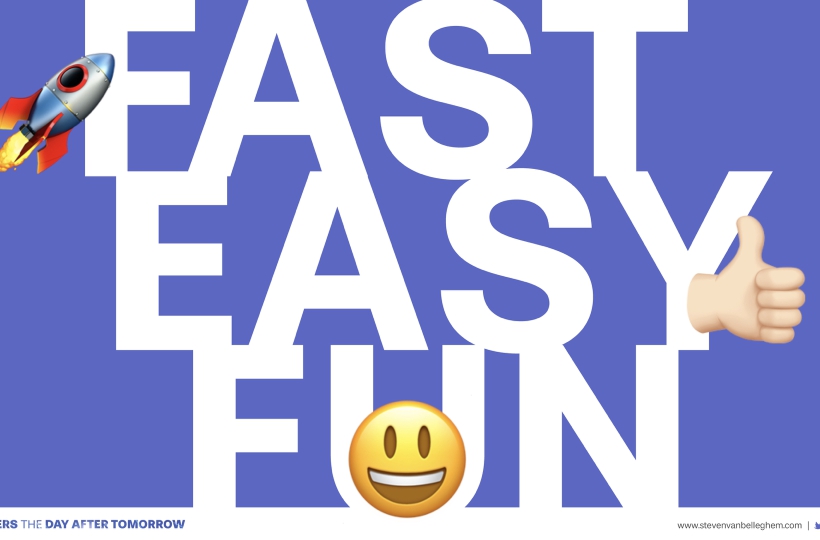Five (invisible) kings of the frictionless customer experience

KBC
I absolutely love the example of the KBC Mobile app that allows you to park in any Q-Park-parking without the need for a ticket, payment or any manual action. The only thing that you need to do – once – is to link your car’s licence plate to your existing account in KBC Mobile, and that’s it. After that, you can drive in and out of the parking’s buildings without doing anything: the barriers open automatically, and when you leave, the amount of your stay at the parking is automatically subtracted from your account. I us it all the time now, ironically probably thinking less about KBC than I ever did before.
Flyzoo
Alibaba’s ultra-modern Hangzhou hotel FlyZoo – a Chinese pun for “must stay”, apparently – is a perfect illustration of the way hotels of the future will be dismissing friction. You can book the hotel room through an app, pick a floor and a view, scan your face in the app and then enjoy one of the most friction-free check-ins possible: no need to pick up a key from the lobby, because the elevator will scan your face, take you to the correct floor, and then your face will open the room door. FlyZoo is one of the first, but certainly not the only hotel that basically eliminates the hassle of check-in interaction: Marriott International recently launched a facial recognition check-in program in Hangzhou and Hilton is taking a phone-based approach to smart rooms.
BMW
BMW is certainly another king of silent and almost invisible customer experience. In 2021, it will introduce BMW Natural Interaction, which adjusts the systems and cabin experience for each driver, according to their context, allowing for more intuitive interactions. If you’re in a conversation or a phone call, for example, you could use a gesture or eye movement to turn down the volume or adjust air vents. On the other hand, if you’re driving really fast on the highway, using your voice might seem like a better idea. Some of the most impressive features of BMW Natural Interaction have to do with the outside context, though. BMW promises that you will be able to point at something outside, and make a reservation (if it’s a restaurant), or even ask for opening hours and customer ratings.
Disney
This might be a more classic and one of the first examples of a frictionless customer experience, but seeing that I am such a huge Disney fan, I couldn’t leave the example out. Disney’s MagicBands allow visitors to unlock the doors of their Disney Resort hotel room, enter theme and water parks (with valid admission), check in at fastlane entrances, connect Disney pictures to their account and charge food and merchandise purchases to their Disney Resort hotel room. The bands are keys, tickets and money all in one, without any action needed. On top of that, they collect information of where the guests are in the park to recommend experiences and even keep customers out of busy areas. I’m not sure who’s a bigger fan in our family: me or my kids. The only drawback probably is the “effortless” gap that the magic bands to leave in my wallet after a stay.
Lufthansa Group
Another example I love is that of Lufthansa Group’s automated kiosks with facial recognition technology at Los Angeles International Airport. They allow to identify passengers, crosscheck them in the Customs and Border Protection (CBP) database and board them on a plane within a few seconds, speeding up total boarding time by 50%. In turn, passengers neither need to present a boarding pass nor a passport, while airline staff can focus on preparing the aircraft for departure and solving last-minutes challenges. It’s invisible boarding at its best.
Now that you’ve read about these frictionless customer experience pioneers, it might be a good idea to think about how you can remove friction for your customers. What is the worst part of their interaction with you and your product or service, and how can you make that disappear?